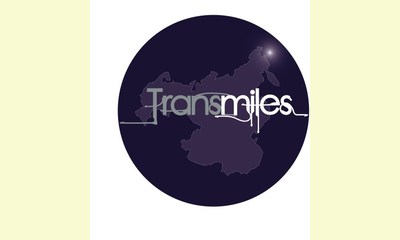|
|
TRANS'MILES, a Student Project Linking up with Peoples in the East
un articulo por Gwenaëlle Beauvais
Last September, two French students in the program International Cooperation and Solidarity decided to make a photo report about the countries of the East. In the course of their studies, these two young women, 23 and 24 years old, became aware of the misunderstandings and lack of interest given by solidarity organizations to the peoples of North Asia. These are regions charged with history and complex geopolitics but they have not been well studied since the end of the Cold War. Solène Paloma and Stéphanie Genteuil decided that they will go to Trans-Siberia (Russia, Mongolia, China) next April to meet directly with engaged citizens and to shed some light on "those who are working on a daily basis for their community development." They decided to publicize their articles and photographs in an Internet blog functioning as a kind of notebook for their voyage. At the same time, they plan to make available their articles in a more extended form as a newsletter which will be accessible on partner websites.

click on photo to enlarge
GB - By means of this project, it seems that you would like to send a message to people engaged in international solidarity. What is the message?
Solène Paloma - Our experiences have led us to rethink solidarity actions and to question our understandings concerning a number of regions which traditionally do not have solidarity links with the West. Our profession, which is constantly evolving, needs to regularly reconstruct its ethical framework through new research. We are very involved in our training, and we wish to take part in the re-launching of a dynamic in the field of international solidarity.
GB - Who can benefit from this project?
Solène Paloma - We hope above all to inform and sensitize those involved in international solidarity to the social and cultural reality today in the Trans-Siberian region. We will share with them the methodological and human experiences that we have during four weeks of voyage. We hope, by this means, to help students find new ways to engage in their training.
GB- How did you come to put together your training with this project?
Stéphanie Genteuil - One of the motivations for our project was the desire to go there in person. We expect in the next few months to finish our internships with work in these Asian countries. We have decided to make a real trip from the Western world to the Eastern world. To take the Trans-Siberian is for us the opportunity to visit territories that are unknown to us and to rediscover distant geographies and cultures.
(Click here for a French version of this article)
|








|
DISCUSSION
Pregunta(s) relacionada(s) al artículo :
Is there a renewed movement of solidarity by the new generation?,
* * * * *
Comentario más reciente:
from Javier Collado Ruano, Director of Edition at Global Education Magazine, on the occasion of the International Day of Solidarity.
Solidarity is a trans-dimensional phenomenon that goes beyond the ontological essence of human nature. In fact, when we analyze the connections between the microcosm and the macrocosm, we perceive that human beings are not involved in chaos and arbitrariness, but belongs to the large network of interdependencies, complementarities and reciprocities that constitute life. The emergence of life on Earth, around 3,8 billion years ago, was a complex process of exceptional natural phenomena, inherent in all living systems. A process which is expressed through unlimited creativity: mutation, gene exchange, and symbiosis. From a cosmo-biological perspective, we can understand a new conceptual dimension of life, where all living beings share same basis of genetic code: the twenty amino-acids and four phosphatic bases. In fact, the diversity of living beings is caused by the combination of this cosmo-bio-genetic basis.
This trans-dimensional perspective has a deep ecological and spiritual sense for our worldview because the human evolutionary adventure is the latest stage of life on Earth. The modern human being is a vertebrate animal, mammal, belonging to the primates, which emerged 200,000 years ago. In recent centuries he has imposed its anthropocentric, industrial and capitalist vision to the detriment of Pachamama (and Indigenous goddess known as earth mother). We consume around 120% of the natural resources that Earth Mother regenerats annually. Our consumer behavior is immersed in a fatalistic dynamic with a destiny to climate change (deforestation, loss of biodiversity, ozone, etc.), and our own self-destruction as a species.
There is an urgent need to get beyond the cognitive fallacy that the mental structures of social Darwinism and capitalist postulates of the 19th century have historically constituted, because they only understand natural and social systems as warmongers and competitive processes whereby species diverge from each other. . ... continuación.

|
|









